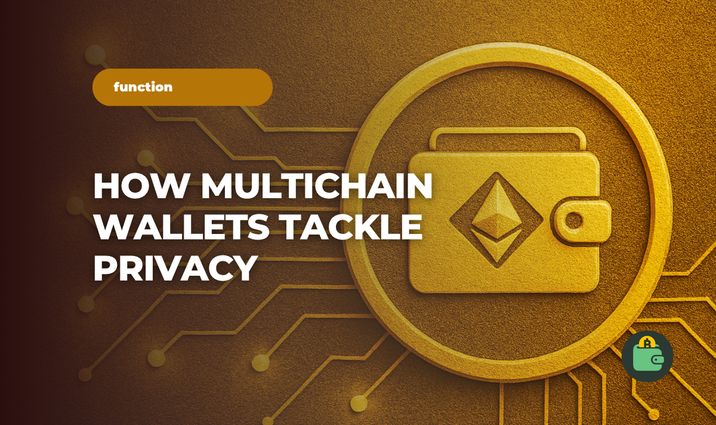Multichain Wallet Privacy Explained: Risks and How to Stay Safe

Multichain wallets manage assets across multiple blockchains (Ethereum, Bitcoin, BNB Chain, Solana, etc.). This creates a risk of address and activity correlation. For example, if a user interacts with different networks through the same interface — and sometimes even with the same seed phrase or private key — an analyst could potentially link their addresses together.
Let’s imagine you are performing Ethereum and Bitcoin transfers from the same device and within the same application. Fraudsters may be able to match your transfer data using wallet addresses, IP addresses, browser fingerprints, or RPC request metadata.
As a result, anonymity on one network can be compromised by activity on another.
The key question is, how do multichain wallets manage to avoid such situations and protect users' funds? Let’s explore below.
Zero-Knowledge Proofs (ZKP, zk-SNARKs, etc.)
Zero-knowledge proofs allow one party to prove the validity of a transaction without revealing any details. For example, zk-SNARKs on blockchains like ZCash prove that a transfer is legitimate while hiding the sender, recipient, and amount. Monero uses Bulletproofs — a type of zero-knowledge proof — to prove that a transaction amount is within a valid range without revealing the actual value. These cryptographic schemes allow transaction data (such as amounts and addresses) to remain hidden at the protocol level.
Multi-Party Computation (MPC)
Private keys are “sliced” into multiple parts and distributed across different devices or nodes. A joint transaction signature is then generated without ever assembling the full private key in a single location. MPC wallets use secure multi-party computation, in which the final public signature of a transaction appears standard on the blockchain, but the private key is never reconstructed in full. This significantly increases resistance to hacking: by eliminating a single point of failure, the risk of key compromise is greatly reduced.
Strong Data Encryption and Hardware Solutions
Most multichain wallets store private keys solely on the user's device. Data and settings are encrypted locally using proven cryptographic algorithms (for example, Coin Wallet, Trust Wallet, and Rabby store user data on the user's device). This prevents private keys from leaking through developer servers.
Many multichain wallets also support integration with hardware wallets (such as Ledger or Trezor), which store secrets inside a secure hardware chip. This greatly enhances security. However, hardware wallets come with limited accessibility, and losing the seed phrase results in the permanent loss of funds. It’s similar to investing: the higher the security, the greater the responsibility.
Biometrics and Decentralized 2FA
Some wallets introduce additional layers of authentication. For example, Zelcore Wallet encrypts private keys and allows users to unlock the wallet using biometric authentication (such as a fingerprint). Moreover, Zelcore has implemented decentralized two-factor authentication (d2FA), in which multiple distributed nodes are required to authorize a transaction. This eliminates a single point of failure and enhances overall security.
Private Networks and Proxies
To hide IP addresses and network metadata, some wallets integrate with anonymous networks. For example, Unstoppable Wallet supports connections via Tor and anonymous WalletConnect sessions without collecting any user data.
There are also specialized “private RPC” services (e.g., RPCh) that route requests through mixnets, completely concealing your metadata from any observers, including your internet service provider (ISP). This helps prevent the correlation of wallet addresses with network activity: even the host provider cannot associate a transaction with a specific IP address.
The Bottom Line
Multichain wallets are generally more susceptible to privacy leaks than single-network wallets because they combine multiple addresses and keys within a single interface and inevitably accumulate more metadata. Moreover, since different blockchains use distinct architectures and data storage standards, this adds complexity to how transaction information is processed and analyzed.
Therefore, the primary goal is not only to ensure maximum security but also to minimize or break the link between the user and their activity across blockchain networks.
Read more about multichain wallets on our blog: